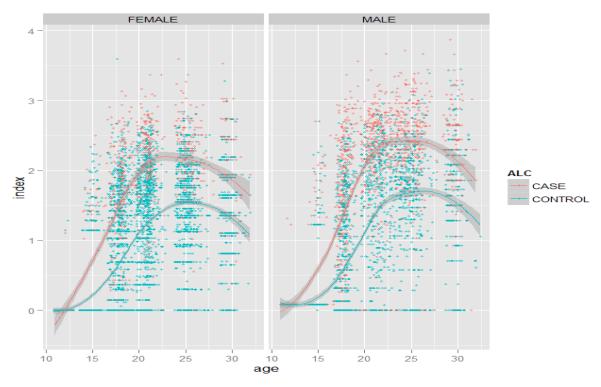Figure 6.
Quantity-frequency drinking index as a function of age in the Minnesota Twin Family Study longitudinal samples. The index is scaled to have a standard deviation of 1.0. The lines represent the lowess-averaged trajectories for those who met lifetime criteria for Alcohol Dependence (cases) versus those who did not. The trajectories show that individuals who develop Alcohol Dependence tend not only to start drinking earlier but also accelerate more rapidly in their drinking in adolescence.

